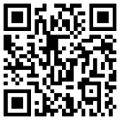Development of Learning Media Website Based Using Blended Learning for 2D and 3D Animation Subjects for Vocational High Schools
Abstract
Full Text:
PDFReferences
N. S. Hanum, “Keefetifan e-learning sebagai media pembelajaran (studi evaluasi model pembelajaran e-learning SMK Telkom Sandhy Putra Purwokerto),” J. Pendidik. Vokasi, vol. 3, no. 1, pp. 90–102, 2013, doi: 10.21831/jpv.v3i1.1584.
E. Surahman and H. D. Surjono, “Pengembangan adaptive mobile learning pada mata pelajaran biologi SMA sebagai upaya mendukung proses blended learning,” J. Inov. Teknol. Pendidik., vol. 4, no. 1, p. 26, 2017, doi: 10.21831/jitp.v4i1.9723.
I. Syarif, “Pengaruh model blended learning terhadap motivasi dan prestasi belajar siswa SMK,” J. Pendidik. Vokasi, vol. 2, no. 2, pp. 234–249, 2013, doi: 10.21831/jpv.v2i2.1034.
S. Bibi and H. Jati, “Efektivitas model blended learning terhadap motivasi dan tingkat pemahaman mahasiswa mata kuliah algoritma dan pemrograman,” J. Pendidik. Vokasi, vol. 5, no. 1, p. 74, 2015, doi: 10.21831/jpv.v5i1.6074.
S. B. Sjukur, “Pengaruh blended learning terhadap motivasi belajar dan hasil belajar siswa di tingkat SMK,” J. Pendidik. Vokasi, vol. 2, no. 3, pp. 368–378, 2013, doi: 10.21831/jpv.v2i3.1043.
A. Cholid, H. Elmunsyah, and S. Patmanthara, “Pengembangan Model Web Based Learning Pada Mata Pelajaran Jaringan Dasar Paket Keahlian Tkj Pada Smkn Se-Kota Malang,” J. Pendidik. Teor. Penelitian, dan Pengemb., vol. 1, no. 5, pp. 961–970, 2016, doi: 10.17977/jp.v1i5.6333.
E. Multyaningsih, Applied Research Methods in Education. Bandung: Alfabeta, 2014.
R. M. Branch, Instructional Design: The ADDIE approach. New York: Springer, 2009.
N. Suryani, A. Setiawan, and A. Putri, Innovative Learning and Development Media. Bandung: PT Youth Rosdakarya, 2018.
Sugiyono, Metode Penelitian Kuantitatif, Kualitatif dan R&D. Bandung: Alfabeta, 2016.
A. Azhar, Media Pembelajaran. Jakarta: PT. Raja Grafindo Persada, 2013.
Sardiman, Interaksi dan Motivasi Belajar Mengajar. Jakarta: PT. Raja Grafindo, 2016.
S. Akbar, Instrumen Perangkat Pembelajaran. Bandung: PT Remaja Rosdakarya, 2013.
A. Cahyadi, Development of Media and Learning Resources. Serang: Laksita Indonesia Publisher, 2019.
A. Emda, “Kedudukan Motivasi Belajar Siswa Dalam Pembelajaran,” Lantanida J., vol. 5, no. 2, p. 172, 2018, doi: 10.22373/lj.v5i2.2838.
DOI: http://dx.doi.org/10.17977/um010v4i12021p33-38
Refbacks
- There are currently no refbacks.
 | Letters in Information Technology Education (LITE) |

1.png)
1.png)
4.png)
1.png)
.png)
.png)

3.png)
1.png)
1.png)

3.jpg)